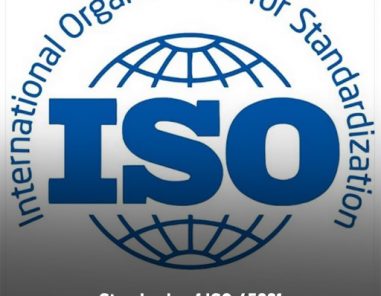
Standards of ISO 45001 – A Detailed Overview of the ISO 45001 Standards
The ISO 45001 standard enables organisations to provide a safe and healthy wo...
Read MoreThe “Plan, Do, Check, Act” (PDCA) cycle is widely recognised as a staple of ISO standards. When talking about the ISO 45001:2018 standard, the PDCA cycle helps organisations achieve better employee safety and enhanced workplace health through the implementation of an Operational Health and Safety (OHS) system. With the help of Australian ISO consultants, you can get to know the ISO 45001 PDCA cycle.
Essentially, the PDCA cycle can be simply described as:
In this article, the application and benefits of the PDCA cycle have been explained in relation to ISO 45001 certification.

An underlying theme of the PDCA cycle runs throughout the ISO 45001 standard. When an organisation writes their OHS policy and identifies its objectives or plans, the first instance of “plan,” is constituted. Similarly, when processes are considered and constructed to meet these objectives, the instance of “do,” takes shape.
The review and adjustment section cover the “check,” and “act,” respectively. Hence, one can say that even in the construction of the OHS policy, the PDCA cycle has been unknowingly utilised. Therefore, it makes sense to utilise the cycle consciously and constructively to assimilate its hugely beneficial properties. We suggest you read ISO 27001 PDCA to learn more about the PDCA cycle in ISO implementation.

When going through the ISO 45001 standard, one can see evidence of the PDCA cycle almost everywhere. Let us examine some of the clauses of the standard that contain the PDCA cycle:
This section of the standard deals specifically with the identification of hazards, risk assessment and controls. These assessments are clearly a part of the “plan” phase and appropriate planning is vital to meeting the organisation’s objectives. Similarly, improper planning will lead to increased incidents, and hence, decreased safety.
These sections are clearly a part of the “do” component of the PDCA cycle. When aspects such as construction of processes and other resources are carefully considered, the OHS system’s performance is enhanced. Without this stage, the performance of the OHS system can be compromised due to shortcomings including inadequate resources, improper execution of steps and inappropriate communication channels.
As this section deals specifically with performance monitoring and measuring, ISO 45001 audit and management review, it clearly aligns with the “check” segment of the cycle. Accurate recording of data for analysis is critical to providing a basis for action and encouraging continual systemic improvement throughout the organisation.
This clause underpins the ISO 45001 standard and provides the “act” part of the cycle. Improvement can be implemented through formal ISO 45001 processes such as incident, non-conformity and corrective action or through employee suggestions as well as internal improvement initiatives. Irrespective of how the improvement strategy originates, this step is critical to tie the whole PDCA cycle together and effectively produce results. This will help you reap the ISO 45001 benefits.

By going through the clauses of ISO 45001, it becomes easier to see how the PDCA cycle works and how the components are interdependent with each other. It is evident that underperformance in any one part of the cycle only adds up to the underperformance of the entire OHS system. Whether it is poor planning, poor execution, inaccurate data collection or ineffective processes, underperformance ultimately leads to failure to meet safety objectives.
Therefore, the importance of the correct execution of the PDCA cycle cannot be underestimated. Additionally, the benefits of performing all the parts of the cycle are immense, and the probability of meeting the objectives increases greatly. Making the PDCA cycle the fulcrum of an organisation’s OHS system will protect all employees and stakeholders, enhance the organisation’s business reputation and increase the chances of ISO 45001 accreditation.
An effective OHS system can provide additional benefits to the organisation by minimising the risk of production delay, providing a safe environment to the business and demonstrating the organisation’s commitment to maintaining an effective health and safety policy. The PDCA cycle helps to meet the legal requirements and improve staff morale by creating a safer environment.
The other benefits of the PDCA cycle include minimising risks of downtime through accidents, demonstrating commitment to meet legal obligations, possible cost savings from public liability insurance premiums, maintaining compliance with legal requirements and providing a robust system to maintain as well as improve health and safety.
The other advantages of the PDCA cycle is that the cyclic nature of the framework invites constant improvement and the iterative approach allows control as well as analysis. It is a wonderful tool for introducing improvements in a sustainable and thoughtful manner instead of projecting change with a spontaneous, hair-jerk approach.
ISO certification gives your organisation a competitive edge. By helping you increase operational efficiency and overall product consistency, your business credibility and authority will soar to new heights.

Copyright © 2022 The ISO Council | Privacy Policy